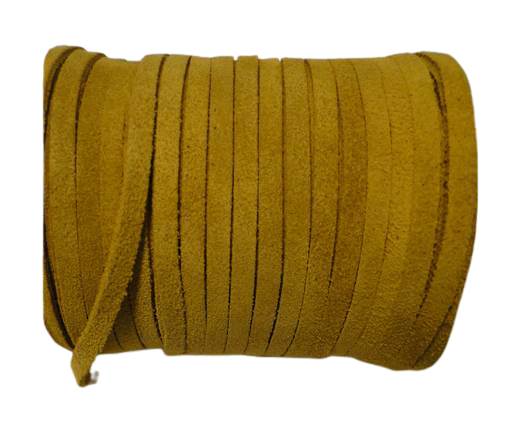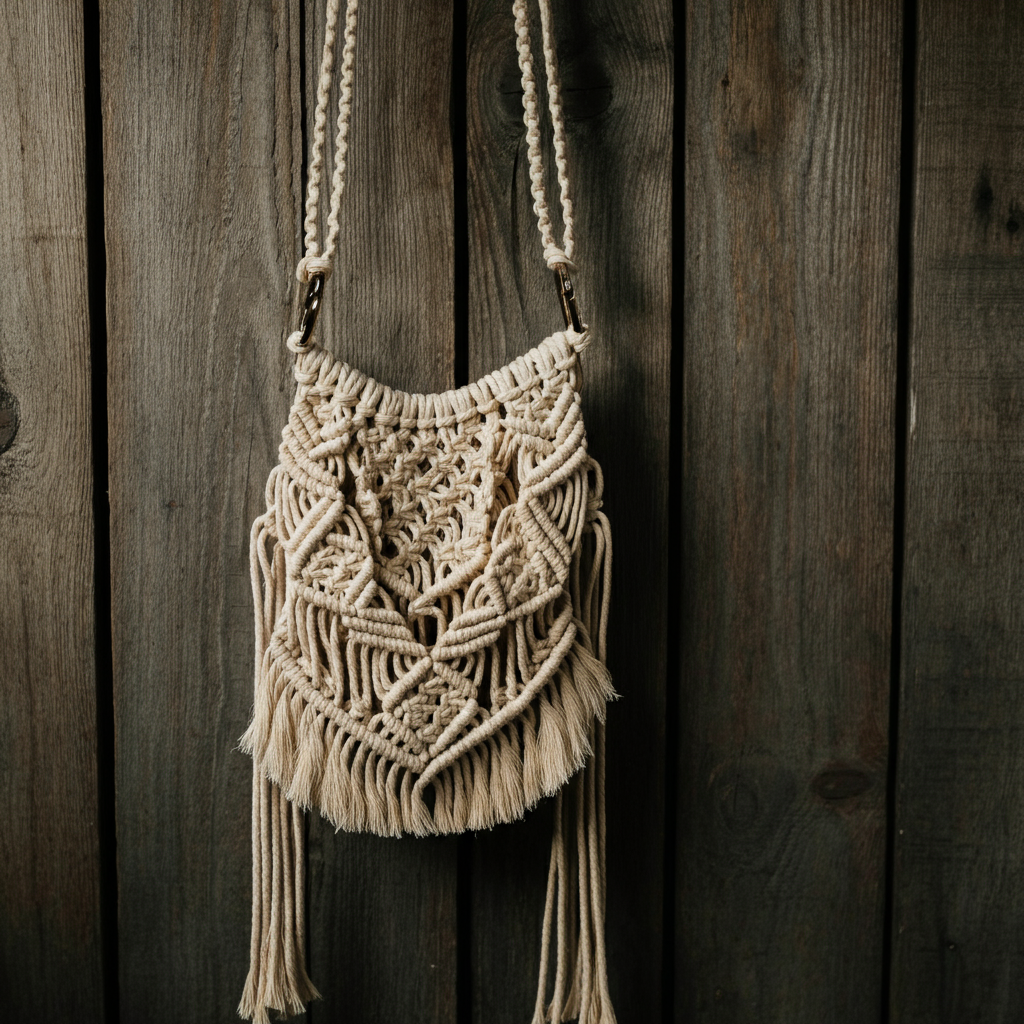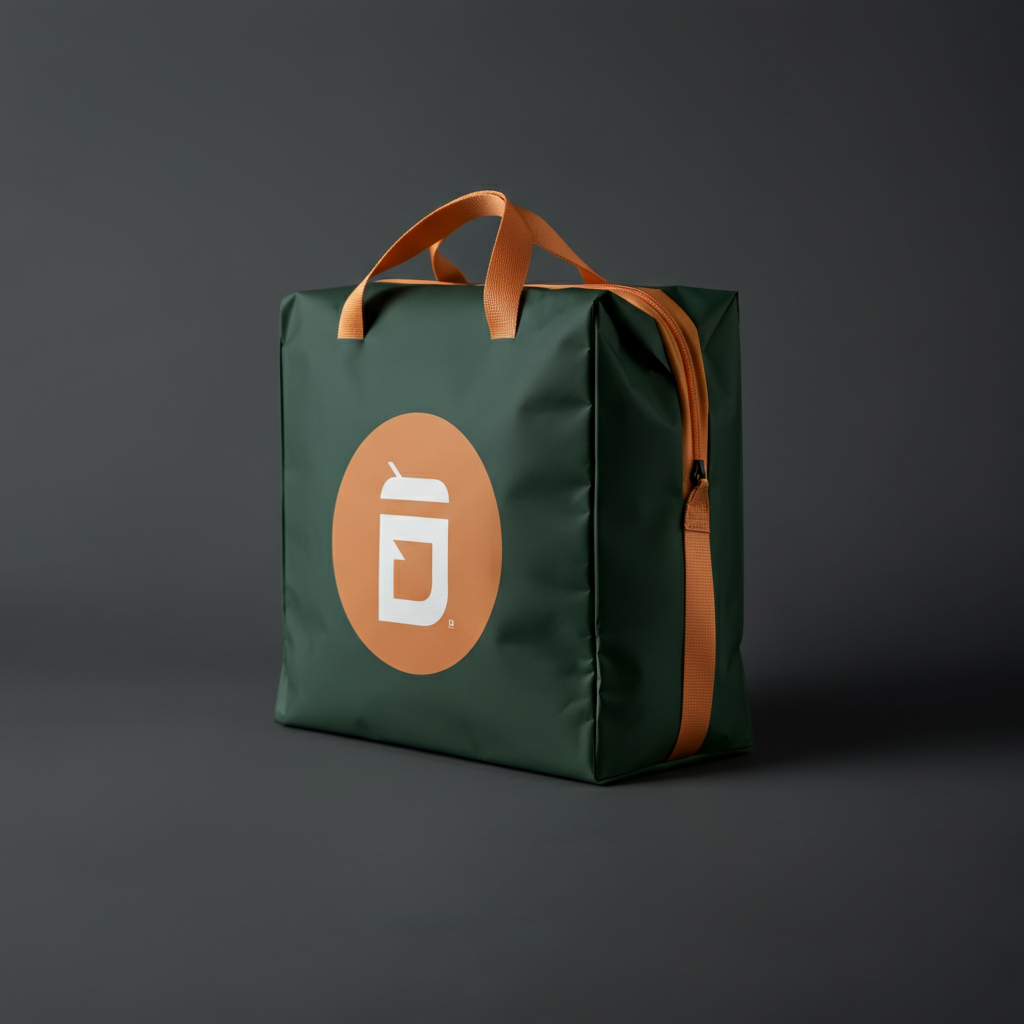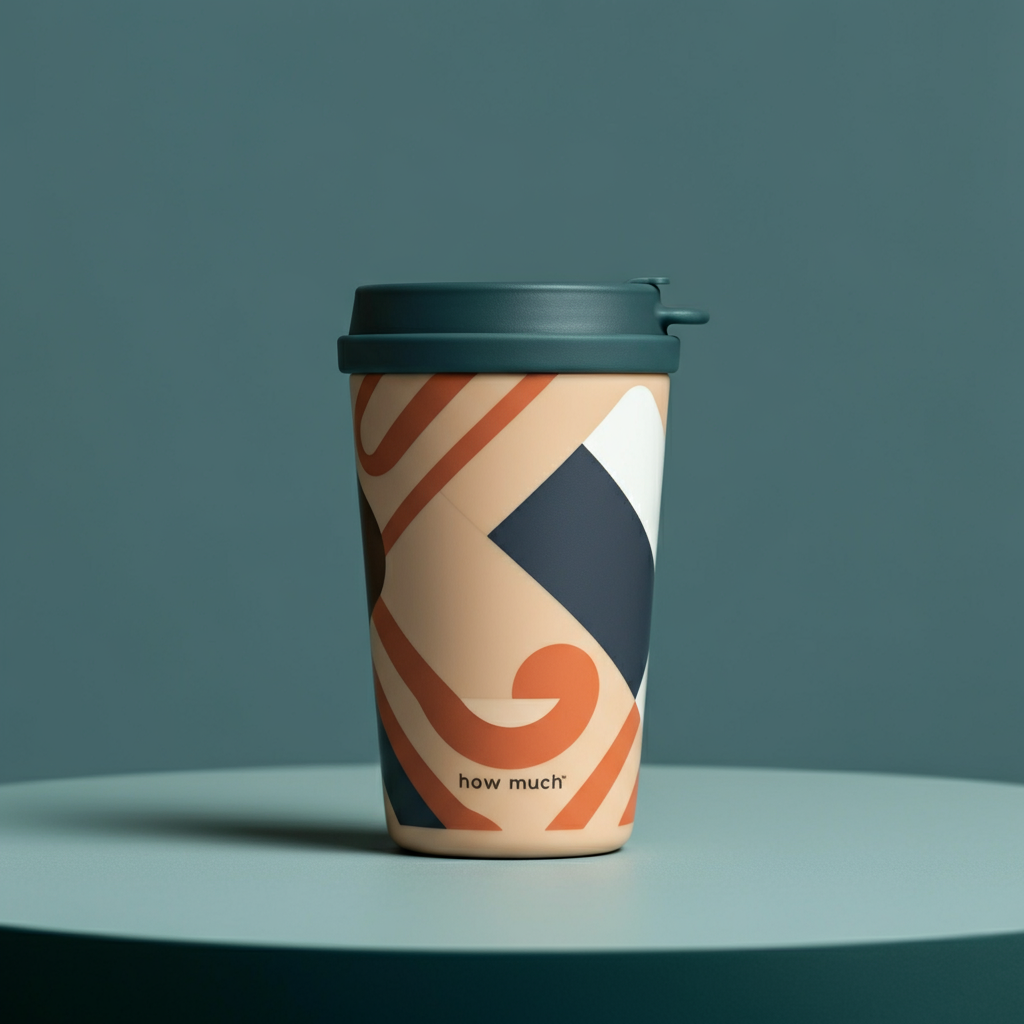Suede leather cord is renowned for its soft, fuzzy texture that's a staple in numerous industries, from high fashion to home décor. Understanding the intricate process of crafting suede from animal hide is not only enlightening but can enhance your appreciation for this luxurious material. Whether you're a DIY enthusiast, a leather aficionado, or a professional in the fashion and jewelry industries, delving deep into the creation of suede leather can offer invaluable insight and inspiration for your projects.
In this comprehensive guide, we'll explore the multi-stage process of suede leather production, from the selection of hides to the finishing touches. You'll learn the nuances involved in each stage, ensuring a profound understanding of how suede leather transforms from raw material to a versatile luxury.
Introduction: The Allure of Suede Leather
Before we embark on the journey of suede leather production, let's take a moment to appreciate its value and appeal. Suede leather, a type of leather with a napped finish, has a distinct velvety surface that exudes a sense of luxury and comfort. It's a popular choice for clothing, accessories, and décor due to its softness, pliability, and adaptability to different styles.
The production of suede leather is a complex art that balances traditional techniques with modern innovation to create a material that stands out in the global market. As we explore the step-by-step creation of suede leather, you'll gain new respect for the craftsmen who meticulously produce this coveted material.
Step 1: Preparing the Animal Hide
The journey to suede begins with selecting the right type of hide. Generally, cattle, deer, and goats are the primary sources for suede leather, each offering unique qualities that influence the final product.
Understanding the Types of Hides Used for Suede Leather
Cattle: Sturdy Yet Supple
Cattle hides, known for their thickness, possess a unique combination of durability and flexibility that makes them excellent for creating suede. Through careful trimming and softening, these hides retain their natural strength while becoming wonderfully soft to the touch. This makes them the perfect choice for crafting long-lasting goods that can withstand everyday use.
Deer: Fine and Fashionable
With their smooth and slender hides, deer offer a luxurious suede that is highly sought after in the world of high-end fashion. The leather produced from deer hides is exceptionally soft, with a fine nap that adds a touch of elegance. This delicate suede is perfect for creating exquisite items like gloves and shoes, where a refined and fashionable aesthetic is desired.
Goat: Versatile and Vibrant
Goat hides strike a remarkable balance between toughness and smoothness, resulting in a rich suede that is both durable and luxurious. These hides readily accept dye, allowing for a vibrant and wide range of colors. It is no wonder that goat suede is commonly used in the creation of various leather goods, including jackets and handbags, where versatility and a touch of vibrancy are desired.
Removing Hair and Fleshing
Once selected, the hides undergo a critical process of hair removal. Traditionally, this was a manual task, but modern tanneries use lime baths to loosen hair follicles, followed by scraping to remove hair and the top layer of the hide, known as the epidermis.
Fleshing machines equipped with sharp blades help to further clean the hides, preparing them for the next stage. This thorough cleaning is vital for achieving the napped texture that is characteristic of suede.
Step 2: Tanning
Tanning, the second crucial step in leather production, transforms raw hides into a durable and usable material. Tanning can be a long, delicate process, involving various chemicals and techniques.
The Art of Tanning: A Comparison of Vegetable Tanning and Chromium Tanning
Vegetable Tanning: A Time-Honored Craft with Natural Ingredients
When it comes to tanning, one method that has stood the test of time is vegetable tanning. This traditional approach has been used for centuries and relies on the natural tannins found in tree bark. The process involves immersing the hide in a bath of these tannins, allowing them to slowly penetrate the leather and create a durable and long-lasting material.
One of the notable characteristics of vegetable-tanned leather is its suitability for tooling and crafting. The tannins impart a distinct malleability to the leather, making it perfect for intricate designs and patterns. Additionally, this type of leather tends to have a more natural and earthy appearance, which is highly valued by artisans and leather enthusiasts. Another advantage of vegetable-tanned leather is its suitability for suede finishes, offering a soft and velvety texture.
Chromium Tanning: A Modern and Efficient Approach
In contrast to vegetable tanning, chromium tanning is a relatively newer method that has gained popularity for its efficiency and versatility. This technique involves the use of chromium salts, which quickly and effectively penetrate the leather fibers, resulting in a faster tanning process. The use of chromium salts also allows for greater control over the final characteristics of the leather.
One notable advantage of chromium-tanned leather is its softness and suppleness. The chromium salts facilitate a more thorough and uniform penetration of the tanning agents, resulting in a leather that is easy to bend, fold, and mold. This pliability makes chromium-tanned leather a preferred choice for various applications, including footwear, bags, and garments.
Another benefit of chromium tanning is its excellent receptiveness to dyes and finishes. The uniform structure of the leather fibers allows for a more even distribution of colorants, resulting in vibrant and consistent dyeing. Additionally, the surface of chromium-tanned leather is receptive to various finishes, such as polishing or embossing, providing endless possibilities for creative designs and customization.
In summary, the choice between vegetable tanning and chromium tanning depends on various factors, including the desired characteristics of the leather and the intended application. Vegetable tanning offers a time-honored craft with natural ingredients, providing a malleable and suede-friendly leather. On the other hand, chromium tanning offers a modern and efficient approach, resulting in soft and versatile leather with excellent dyeability and finishability.
Processes Involved
Regardless of the tanning method, several critical processes occur during this stage:
Soaking: Hides are soaked in water to remove lime and make them pliable.
Tanning: Whether with tannin or chromium salts, this is the step that stabilizes the proteins in the leather, preventing it from putrefying and hardening.
Splitting: Sometimes the hide is split into layers here, with the thinner layer becoming suede.
Shaving: This is also sometimes done at this stage, removing excess thickness to achieve the desired weight and texture.
Geographic Trends in Tanning Practices
When it comes to the geographic distribution of tanning practices, there is a distinct division between methods favored in various parts of the world.
Countries Leading in Chromium Tanning
Chromium tanning, known for its rapid process and durable results, is predominantly used in industrial and high-volume production environments. It's particularly prevalent in countries with advanced chemical industries. Italy, India, and China are leading producers of chromium-tanned leather due to their robust manufacturing sectors, availability of raw materials, and demand for affordable, versatile leather goods.
Nations Preferring Vegetable Tanning
Conversely, vegetable tanning is a craft more commonly embraced by countries with a rich history in artisanal leatherwork. Nations such as Italy, renowned for their luxury goods, still uphold the tradition of vegetable tanning, primarily in regions like Tuscany where the method is part of their heritage. Other countries known for their vegetable-tanned products include Spain, with its famous Cordovan leather, and several countries in Africa, where the availability of natural tannins and a focus on sustainable practices make this method favorable.
The choice of tanning method is influenced by a blend of cultural tradition, environmental considerations, the type of end products desired, and the economic context within which manufacturers operate.
Step 3: Splitting and Shaving
After tanning, the hides are further processed to create the softer, napped suede surface. Splitting is an integral part of this stage, where the leather is divided into layers.
Splitting the Hide into Layers
The hides are passed through a machine that expertly slices them horizontally, creating two or more layers. The top layer, or grain, becomes the smooth surface of full-grain leather, while the inner or lower layers will be worked into suede.
Shaving to Achieve Desired Thickness
The now-separated suede layers are shaved to the appropriate thickness. This step requires precision, as it influences the final weight and flexibility of the suede. The shaved layers are then sorted to ensure uniformity and quality.
Step 4: Softening and Dyeing
Softening and dyeing are pivotal stages that bring out the unique characteristics and finishing of suede leather. These processes are where suede truly begins to take form and texture.
Techniques to Soften the Leather
Suede requires specialized softening to develop its characteristic feel. This is accomplished through:
Fatliquoring: Restoring Moisture
Fatliquors, a mix of oils and emulsifiers, are worked into the leather, restoring moisture and enhancing suppleness. This stage is vital in making the suede pliable and soft to the touch.
Tumbling and Mashing: Achieving the Suede Effect
The softened leather cord can then be tumbled in a drum with sawdust or other materials to raise the nap, or it can be mashed with pressure to create the soft, velvet-like texture of suede.
Dyeing Process and Color Options
The dyeing of suede leather is an art in itself. The porous nature of suede makes it particularly receptive to color, allowing for a broad spectrum of shades.
Immersion Dyeing
Suede is often dyed by immersing it in vats of hot, colored liquid. The longer the leather remains in the dye, the deeper and richer the color becomes.
Spray Dyeing
For a more nuanced and variegated effect, suede can be dyed using a spray technique that creates a mottled or gradient appearance.
Step 5: Finishing and Texture
The final stage involves applying finishes to suede, enhancing its appearance and texture to meet the desired quality and use.
Applying Finishes for Desired Texture
The finish applied to suede plays a significant role in how the final product looks and feels.
Acrylic Finish: Retaining Softness
An acrylic finish is often applied to maintain the suede's softness and to help resist water and stains. It can also enhance color vibrancy and provide a more uniform nap.
Waxes and Oils: A Luxurious Sheen
For a richer, glossier finish, waxes and oils can be buffed onto the suede. This can create a more lustrous surface, giving the suede a high-quality and luxurious appearance.
Sanding and brushing:
When it comes to finishing suede leather, one crucial step is sanding and brushing. This process is essential for navigating the nap of the suede, which refers to the natural texture of the material. By carefully sanding and brushing the surface, any irregularities are smoothed out, resulting in a consistent and luxurious feel. This meticulous attention to detail ensures that the final surface texture of the suede is perfected, enhancing its overall quality and appearance. Whether it's removing imperfections or enhancing the softness of the material, sanding and brushing play a vital role in achieving a flawless finish for suede leather.
Techniques for Enhancing the Nap
To enhance the velvety texture, various techniques can be used:
Napping Machines
These high-speed machines use small wire brushes to comb the suede, aligning the fibers and raising the nap for a consistent and even texture.
In the process of hand buffing, skilled craftsmen employ specialized hand tools to meticulously enhance the suede, allowing for precise control over the texture and ultimately achieving a refined finish for the leather.
Using Suede Leather in Your Creations
Suede leather offers artists and designers a wealth of creative opportunities. Whether you're crafting a timeless piece of jewelry or a one-of-a-kind fashion accessory, suede can add a touch of elegance and luxury.
Suede in Jewelry
Suede is a popular choice for jewelry due to its softness and adaptability to various designs. It can be used as a base for pendants, inlays for bracelets, or even as a cord for necklaces. Its rich texture and deep color make it an excellent complement to both metal and gemstones.
Suede in Fashion
Suede is an iconic material in the fashion industry, famous for its use in items like jackets, skirts, and shoes. It offers designers the ability to create comfortable, stylish garments with a unique touch. Suede can be seen in both high fashion and casual wear, showcasing its versatility.
Other Uses for Suede
Suede's appeal extends beyond jewelry and fashion. It's used in interior design for items like cushion covers, drapery tie-backs, and upholstery. The soft, inviting texture of suede adds warmth to any space, making it a preferred material for luxurious home accents.
---
Conclusion: The Craft of Suede Leather Production
The art of producing Flat suede leather cord is a labor-intensive process that requires skill, precision, and a deep respect for the materials involved. From selecting the hides to the finishing touches, each step is a testament to the craftsmanship and artistry that goes into creating this exceptional material.
By understanding the detailed process of suede leather production, you can better appreciate its value and quality. It can also guide you as you incorporate suede into your creative endeavors, helping you to make informed choices and achieve remarkable results.
Suede leather stands as a testament to the age-old craft of leatherworking—one that continues to thrive in the modern world, adapting to new techniques and technologies while maintaining its timeless allure. As you explore the world of suede, whether as a consumer, creator, or enthusiast, remember the dedication that has gone into every inch of this luxurious material.




